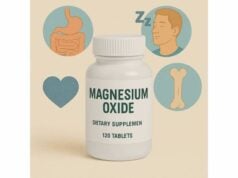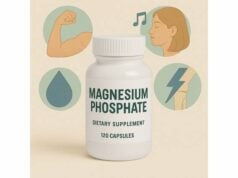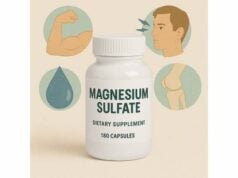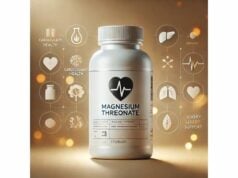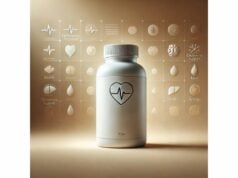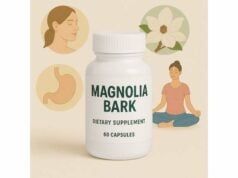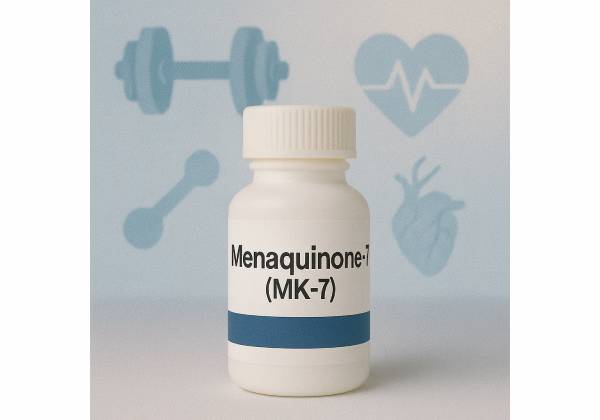
Melenaquinone-7 (MK-7) is a long-chain form of vitamin K2 best known for activating proteins that guide calcium to where you want it—bone and teeth—and away from where you do not—arteries and soft tissues. Compared with vitamin K1, MK-7 remains in circulation longer, so steady, once-daily doses can maintain activity throughout the day. People reach for MK-7 to support bone strength, balance markers of vascular health, and complement vitamin D. You will also see it in “bone complex” blends with calcium and magnesium, and in “K2 plus D3” capsules. Research is still evolving: some trials show structural or biomarker benefits; others show no change in bone density despite improved vitamin K status. This guide translates the evidence into practical steps—what MK-7 is, what it likely does (and does not), how to take it, who should skip it, and what to expect over weeks to months. If you are considering MK-7, you will find clear dosage ranges, timing tips, safety notes, and a balanced look at the science.
Key Insights
- Supports carboxylation of osteocalcin and matrix Gla protein, helping direct calcium to bone and away from arteries.
- Typical dose is 90–200 mcg daily with food; many studies use 180 mcg per day.
- Do not combine with warfarin or other vitamin K–antagonist anticoagulants unless your clinician adjusts therapy.
- Avoid unsupervised use if you have a bleeding disorder, severe kidney disease, or upcoming surgery; consult a professional first.
Table of Contents
- What is MK-7 and how it works
- Benefits you can reasonably expect
- How to take MK-7 for results
- Dosing by goal and timing
- Common mistakes and troubleshooting
- Safety, interactions and who should avoid
- What the evidence says so far
What is MK-7 and how it works
Vitamin K is a family of fat-soluble compounds. MK-7 is a long-chain menaquinone (a vitamin K2 subtype) found naturally in fermented foods—especially natto—and made by certain bacteria. In supplements, MK-7 is typically isolated from bacterial fermentation and delivered in oils as softgels or capsules.
What makes MK-7 distinct is its sustained presence in the bloodstream after you take it. That longer residence time supports consistent activation (“carboxylation”) of vitamin K–dependent proteins such as osteocalcin in bone and matrix Gla protein (MGP) in vascular tissue. When these proteins are fully carboxylated, they bind calcium effectively. In practical terms, well-carboxylated osteocalcin helps mineralize the bone matrix, while carboxylated MGP inhibits calcium deposition in arterial walls.
Think of MK-7 as a foreman that signs off on calcium’s work orders. Without that signature, calcium can be misdirected: bone proteins remain inactive, and “anti-calcification” proteins in arteries cannot do their job. Vitamin D increases calcium absorption from the gut, but MK-7 helps your tissues deploy that calcium wisely.
Absorption improves when you take MK-7 with dietary fat. Softgels that suspend MK-7 in oils yield reliable uptake. Because MK-7 is fat-soluble, the body stores a portion in tissues; steady daily intake achieves a new equilibrium within weeks.
Finally, MK-7 is not the same as MK-4 (another K2 subtype). MK-4 has a shorter half-life and is sometimes used in higher or more frequent doses. MK-7, by contrast, is geared toward daily microgram-level dosing. You will see MK-7 paired with vitamin D3 given their complementary roles in calcium handling. This pairing makes sense mechanistically, but the clinical magnitude of combined benefits varies by outcome and study design.
Benefits you can reasonably expect
Bone health (postmenopausal and older adults). MK-7 consistently improves biochemical markers of vitamin K status such as undercarboxylated osteocalcin. Over months to years, some randomized trials report slower loss of bone mineral density (BMD) or improvements in bone geometry, particularly in postmenopausal women. Others show no BMD advantage despite strong changes in carboxylation status. What does this mean for a user? You can be confident MK-7 will “correct” vitamin K–related bone markers; whether that translates to measurable BMD gains depends on baseline status, concurrent vitamin D and calcium intake, and length of follow-up. In general, plan on at least 3–6 months to see laboratory changes and 1–3 years for meaningful structural endpoints like BMD.
Vascular health markers. MK-7 supplementation reduces levels of dephosphorylated-uncarboxylated MGP (dp-ucMGP), a circulating indicator of poor vitamin K status linked to vascular calcification risk in observational work. In some longer trials, MK-7 modestly improves indices of arterial stiffness (for example, carotid-femoral pulse wave velocity), especially in participants with higher baseline stiffness. Lower dp-ucMGP is a positive sign of vitamin K sufficiency, but it does not automatically guarantee fewer cardiovascular events. Consider MK-7 a supportive strategy for vascular calcification balance, not a replacement for standard cardiovascular care.
Teeth and skeletal development contexts. Because MK-7 activates osteocalcin, it is biologically plausible that it influences tooth mineralization and jawbone turnover. Evidence here is preliminary. For children or teens, nutritional vitamin K from foods is encouraged; supplementation beyond a standard multivitamin should be individualized by a clinician.
Synergy with vitamin D. Vitamin D boosts calcium absorption, while MK-7 helps proteins place calcium correctly. Studies that include both nutrients with adequate calcium intake tend to report the most convincing skeletal changes. If you already take vitamin D, adding MK-7 may optimize the “downstream” step of calcium handling.
How quickly benefits appear. Biomarkers like undercarboxylated osteocalcin and dp-ucMGP often improve within 4–12 weeks. Structural measures (BMD, arterial stiffness) require sustained intake—think in seasons and years, not days.
Bottom line: MK-7 is best positioned as a bone-supportive and vascular-marker-friendly nutrient that works quietly in the background. Expect biochemical improvement early and be patient for structural outcomes that depend on time, dose, and your starting status.
How to take MK-7 for results
Choose a bioavailable format. Most reputable MK-7 products deliver microgram doses in oil-based softgels or capsules. Look for a clearly labeled amount of MK-7 (not just “vitamin K”). Natural-source MK-7 from bacterial fermentation is typical. Avoid products that list only “vitamin K” without specifying the form and amount.
Take with a meal that contains fat. MK-7 is fat-soluble. Swallowing it alongside foods that include olive oil, eggs, avocado, nuts, or dairy can noticeably improve absorption. Morning or evening is fine; pick the time you will consistently remember.
Pair intelligently. Combining MK-7 with vitamin D3 is common and mechanistically sound. If bone health is the goal, most adults should ensure a steady vitamin D status, adequate calcium (diet first, then supplement if intake is low), plus protein and resistance exercise. MK-7 is not a stand-alone bone plan; it is an amplifier inside a comprehensive routine.
Mind the dose. Typical effective ranges are 90–200 mcg daily. Many pivotal trials use 180 mcg per day. Higher intakes (for example, 360 mcg per day) appear in some protocols but have not consistently produced superior structural outcomes. More is not always better; staying within established microgram ranges is prudent for most.
Give it time. Expect laboratory markers to shift in 1–3 months. For bone or arterial endpoints, plan for at least 12–36 months of regular use. Consistency matters more than short bursts of high dosing.
Natto or supplement? Natto (fermented soybeans) is the richest natural source of MK-7. If you enjoy it, one natto serving can deliver more MK-7 than many supplements. For those who prefer capsules, supplements standardize the dose and avoid the strong flavor.
Special populations. If you have chronic kidney disease, particularly on dialysis, MK-7 has been studied for effects on dp-ucMGP and arterial stiffness markers; clinical decisions in this setting belong with your nephrology team. If you are pregnant or breastfeeding, do not exceed routine prenatal vitamin K levels unless your obstetric clinician recommends it.
Storage and stability. Keep MK-7 in a cool, dry place, tightly capped, away from direct heat and light. Because the active is fat-soluble, it can degrade if improperly stored. Do not use products past their expiration date.
Quality cues on labels. Look for third-party testing seals, a batch or lot number, and a clear “vitamin K2 (as menaquinone-7)” statement with mcg per serving. Avoid proprietary blends that hide the actual MK-7 amount.
Dosing by goal and timing
General wellness / maintenance.
- Start at 90–120 mcg MK-7 once daily with a meal.
- Combine with a multinutrient plan that includes vitamin D3 and dietary calcium from food.
- Re-evaluate after 3 months (often alongside vitamin D status and lifestyle checks).
Bone support (postmenopausal or at-risk adults).
- 150–200 mcg MK-7 daily is commonly used; 180 mcg is the most frequent research dose.
- Pair with vitamin D3 (per your clinician’s advice) and adequate calcium intake (diet first; supplement only if dietary intake is low).
- Expect biomarker improvements in 1–3 months; BMD assessments are typically annual or every 2–3 years.
Vascular markers and healthy aging.
- 120–200 mcg MK-7 daily with food.
- Consider periodic checks of dp-ucMGP if your clinician measures it; otherwise, view MK-7 as a supportive nutrient rather than a substitute for blood pressure, lipid, and glucose management.
Diet-first approach (natto fans).
- One traditional serving of natto can exceed 200 mcg MK-7. If you regularly eat natto, you may not need an MK-7 capsule.
- For those new to natto, start small—its flavor is intense—and track your overall vitamin K intake if you use anticoagulants that are sensitive to vitamin K.
Timing strategies.
- Once daily is sufficient due to MK-7’s sustained presence in blood. Consistency beats clock precision.
- If you take bile-acid sequestrants or orlistat, separate MK-7 by several hours to reduce malabsorption.
Who might need personalized dosing.
- People with malabsorption syndromes, bariatric surgery, or chronic fat-malabsorption may need individualized plans.
- Those on hemodialysis or with advanced kidney disease should use MK-7 only under specialist guidance.
- Children and teens: prioritize dietary vitamin K and clinician-guided supplementation only when indicated.
When to stop or adjust.
- If your clinician prescribes a vitamin K–antagonist anticoagulant (for example, warfarin), MK-7 can interfere with dosing. Do not start or stop MK-7 without medical coordination.
- Pause before planned surgery as advised by your surgical team.
Practical rule: choose the lowest dose that meets your goal and stick with it daily alongside a meal. Reassess with your healthcare professional based on time-anchored outcomes, not day-to-day fluctuations.
Common mistakes and troubleshooting
“I take MK-7 on an empty stomach.”
Because MK-7 is fat-soluble, taking it without food lowers absorption. Fix: take it with a meal that includes healthy fats—yogurt, eggs, olive-oil-dressed vegetables, nuts, or fish.
“I expect fast bone changes.”
Bone turnover is slow. MK-7 may improve carboxylation markers in weeks, but BMD and fracture-relevant endpoints need long follow-up and comprehensive care (nutrition, vitamin D, calcium, exercise). Fix: track progress over months to years, not weeks.
“More is better.”
Jumping to 300–400 mcg daily has not consistently produced superior structural outcomes compared with ~180 mcg. Fix: stay within 90–200 mcg unless your clinician directs otherwise.
“I only take K2.”
MK-7 supports calcium placement, but you still need vitamin D sufficiency, adequate dietary calcium and protein, and resistance training. Fix: build a complete plan (diet, D3, exercise) and use MK-7 as the coordinator, not the sole actor.
“I am on warfarin; I added MK-7.”
This is unsafe without coordination. Vitamin K antagonists work by limiting vitamin K recycling; MK-7 can blunt their effect and destabilize INR. Fix: involve your prescriber. If MK-7 is desired for a specific reason, dosing changes must be medically supervised.
“I take it sporadically.”
MK-7 works best with steady exposure. Fix: set a daily reminder, pair it with an existing habit (breakfast, brushing teeth), and store the bottle where you will actually see it.
“I chose a vague label.”
Products that list only “vitamin K” can conceal the MK-7 dose. Fix: buy formulas that specify “vitamin K2 (as menaquinone-7)” with a precise mcg amount, ideally third-party tested.
“I rely on MK-7 to reverse calcification.”
MK-7 can shift biomarkers and stiffness measures in some groups, but it is not a stand-alone therapy for established vascular disease. Fix: keep heart-protective basics front and center—blood pressure, lipids, glucose, exercise, diet, and medications as prescribed.
If you dial in timing with food, use a clear dose, and pair MK-7 with vitamin D and lifestyle foundations, you will give the nutrient its best chance to help.
Safety, interactions and who should avoid
General safety. At typical supplemental intakes (90–200 mcg/day), MK-7 is well tolerated. Mild gastrointestinal upset is infrequent and usually resolves with food. Allergic reactions are rare. Because MK-7 is fat-soluble, avoid megadoses beyond researched ranges unless medically indicated.
Medication interactions.
- Warfarin and other vitamin K–antagonist anticoagulants: MK-7 can counteract their effect and destabilize INR. Do not start or stop MK-7 without prescriber guidance. If your clinician chooses to allow MK-7, INR monitoring and dose adjustments are required.
- Bile-acid sequestrants (cholestyramine, colesevelam) and fat-absorption blockers (orlistat): can reduce MK-7 uptake. Separate dosing by at least several hours and reassess nutrient status with your clinician.
- Direct oral anticoagulants (DOACs): these do not target vitamin K; however, any supplement affecting thrombosis risk should be discussed with your care team.
Medical conditions.
- Bleeding disorders or clotting factor deficiencies: specialist input is essential before using MK-7.
- Chronic kidney disease: some studies track dp-ucMGP and arterial stiffness with MK-7, but comprehensive nephrology care remains primary; dosing should be individualized.
- Liver disease or fat-malabsorption: absorption and storage can be altered—professional guidance is recommended.
Life stages.
- Pregnancy and breastfeeding: vitamin K is necessary, but stick to amounts in prenatal vitamins unless your obstetric clinician advises otherwise. High-dose K2 beyond routine prenatal needs is not standard.
- Children: prioritize dietary vitamin K from foods; use supplements only when indicated by a pediatric professional.
Allergens and excipients.
- MK-7 is often delivered in soybean or sunflower oils. If you avoid soy, choose non-soy oils. Check labels for gelatin (if you prefer vegetarian capsules) and for potential allergens.
Surgery and procedures.
- Inform your surgeon and anesthesiologist about MK-7. Depending on the procedure and your medications, you may be advised to pause it in advance.
Testing and monitoring.
- In research and some clinics, dp-ucMGP and undercarboxylated osteocalcin reflect vitamin K status. These are not universal screening tests but may help in specialized settings. Bone density scans, if indicated, are typically repeated every 1–3 years.
When to stop.
- Unexpected bruising, bleeding, or any adverse symptom after starting MK-7 warrants prompt medical evaluation and discontinuation until cleared by your clinician.
Used thoughtfully—right dose, steady intake, and medical coordination when needed—MK-7’s safety profile is favorable for most adults.
What the evidence says so far
Mechanism and pharmacokinetics. MK-7’s extended time in circulation supports daily microgram dosing that maintains vitamin K–dependent protein activation. When people with low vitamin K status take MK-7, undercarboxylated osteocalcin and dp-ucMGP tend to fall, indicating improved activation of bone- and vessel-protective proteins. These biochemical shifts appear quickly (weeks) and are consistent across many studies.
Bone outcomes. In postmenopausal women, multi-year randomized trials present a mixed picture. Some report slower declines in bone mineral density or better bone geometry with 180 mcg/day of MK-7 over three years, particularly at the femoral neck or in measures of bone strength indices. Other robust trials using higher daily amounts (for example, 375 mcg/day) show marked improvements in carboxylation without between-group differences in BMD after three years, even when both arms receive vitamin D and calcium. Meta-analyses pooling vitamin K trials—across K forms and doses—generally suggest small benefits on BMD or bone turnover markers, but heterogeneity is high. Translation: MK-7 reliably improves bone-related vitamin K status; structural bone outcomes depend on baseline status, co-nutrients (vitamin D, calcium, protein), and study duration.
Vascular endpoints. Several studies demonstrate that MK-7 reduces dp-ucMGP, a marker associated with vascular calcification risk. In healthy postmenopausal women, three years of 180 mcg/day improved indices of arterial stiffness compared with placebo, with the strongest effects in those with higher baseline stiffness. Studies in people with diabetes or on dialysis explore similar biomarker directions, but large, long-term trials linking MK-7 use to fewer cardiovascular events are still absent. For now, MK-7 should be viewed as supportive for vascular calcification balance rather than a proven method to prevent heart attacks or strokes.
Dose–response and form differences. Long-chain K2 forms (like MK-7) are more effective than short-chain forms at sustaining carboxylation over 24 hours. Within MK-7, 90–200 mcg/day is sufficient for most adults to normalize markers; very high microgram doses have not reliably translated to superior skeletal outcomes.
Who benefits most. Individuals with low baseline vitamin K status, older adults, and those with higher arterial stiffness measures appear more likely to show measurable improvements. People already consuming natto or very K-rich diets may see limited added value from supplementation.
The prudent takeaway. MK-7 is a useful, low-dose, long-term tool for optimizing vitamin K–dependent proteins that govern calcium placement. For bones, combine MK-7 with vitamin D, dietary calcium, protein, and resistance training. For vascular health, keep expectations realistic and continue standard risk-reduction strategies. As larger, longer trials read out, recommendations will refine; until then, a steady 90–200 mcg/day with food is a reasonable, evidence-informed choice for many adults without contraindications.
References
- Vitamin K – Health Professional Fact Sheet 2021 (Guideline)
- Vitamin K – sources, physiological role, kinetics, deficiency and laboratory assessment 2021 (Systematic Review)
- Effects of vitamin K supplementation on bone mineral density at different sites and bone metabolism in the middle-aged and elderly population: a meta-analysis and systematic review of randomized controlled trials 2024 (Systematic Review)
- Menaquinone-7 supplementation improves arterial stiffness in healthy postmenopausal women. A double-blind randomised clinical trial 2015 (RCT)
- The effect of vitamin MK-7 on bone mineral density and microarchitecture in postmenopausal women with osteopenia, a 3-year randomized, placebo-controlled clinical trial 2021 (RCT)
Disclaimer
This information is educational and is not a substitute for personalized medical advice, diagnosis, or treatment. Do not start, stop, or change any supplement or medication without talking with your licensed healthcare professional—especially if you use anticoagulants, have a bleeding or clotting disorder, chronic kidney disease, or are pregnant, breastfeeding, or preparing for surgery. If you experience unusual bleeding, bruising, or other concerning symptoms, seek medical care promptly.
If you found this guide helpful, please consider sharing it on Facebook, X (formerly Twitter), or your favorite platform, and follow us for future evidence-based articles. Your support helps us continue creating high-quality, reader-first content.

